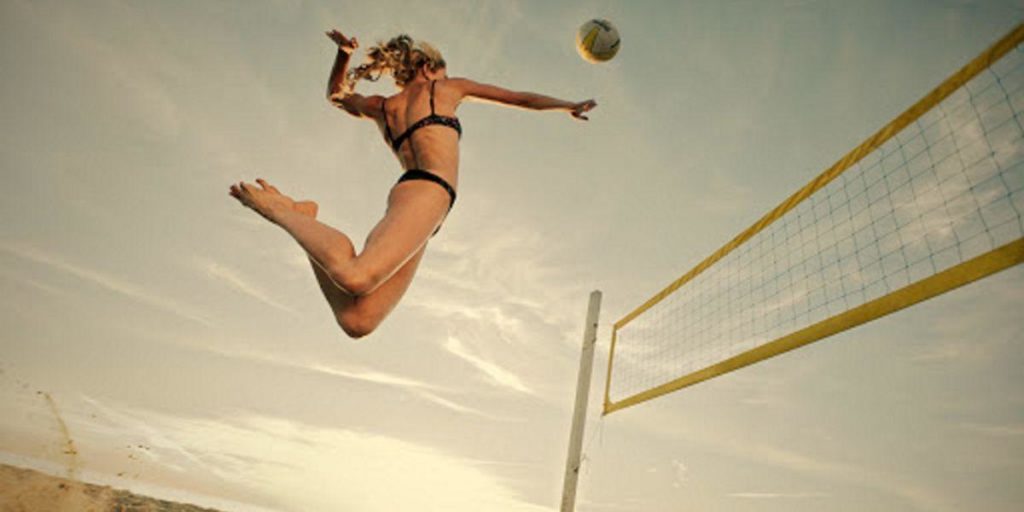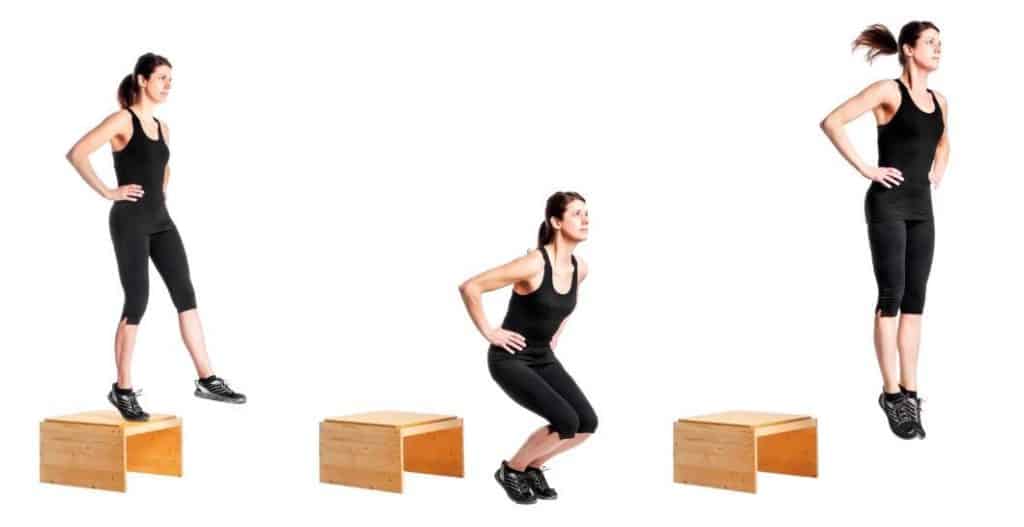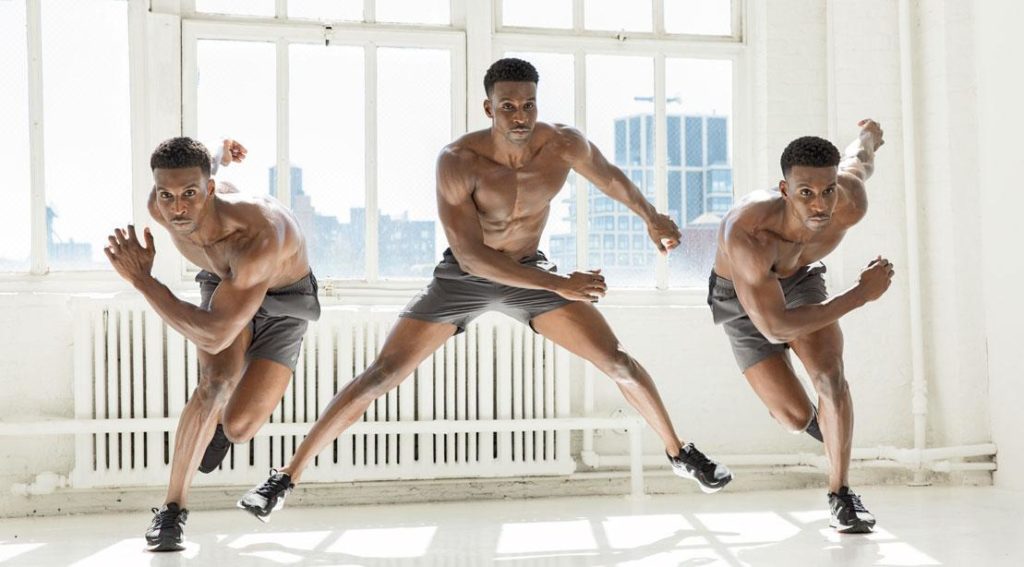28 de February de 2022
We Teach You The Best Workouts Routine For Jumping Higher
The vertical jump is a quality that all athletes, both at the amateur level and at the professional level, must master. From the first categories such as junior or childrens to the first division of any sport. Jumping is a highly prized commodity in all sports (i.e., soccer, basketball, handball, volleyball, etc.). And it is also for the little ones. In addition, the height of the vertical jump will indicate the physical condition of our legs and the ability we have to use our lower body muscles in an ideal way. It doesn’t matter why we want to jump more or better, whether it’s for a professional soccer league player or because we simply want to play a basketball game with friends. However, how can we improve our vertical jump? Should we follow any type of training in particular? Are there essential exercises?
In this week’s post we are going to show you what you should do.In the first place, we should ask ourselves why some people jump more than others if, a priori, they have the same body composition. If we have two people who are physically the same, why does one jump more than the other? Apparently there is a genetic explanation, that is, two people may be the same at first glance but their muscle fibers are different… thus, for example, we know that dark-skinned people have a greater predominance of fast fibers than light-skinned people (1).
However, today we are not going to focus on this, today we are going to teach how to train the vertical jump to improve it.We already know that those athletes whose sport requires constant jumping, such as basketball or volleyball, jump more and better than those sports that do not require so much jumping. Logically, the more we practice a physical condition, the better we become in it. In addition, normally these athletes have a part of the training dedicated to the improvement of the vertical jump. But how do they do it? We are going to highlight 3 important parts of the vertical jump:
-
- The technique.
- The force.
- Nutrition and
- Coordination.

Muscles used to jump higher
Any exercise to jump higher must take into account that there are 3 joints that we must have strong and prepared. The hips, the knees and the ankles. If any of these 3 joints is compromised we will have problems jumping higher. For example, poor ankle dorsiflexion will not allow the descent to be deep enough to accumulate more elastic energy in the legs and therefore jump higher. We must understand that in a vertical jump there is consecutive hip flexion, knee flexion and ankle dorsiflexion followed by hip extension, knee extension and ankle plantar flexion. These movements are what generate that vertical jump and, therefore, the better we do it, the higher we can jump. And what muscles are involved? We use all the muscles that make up the quadriceps, the hamstrings, the glutes, and the calves (or gastrocnemius). Mainly we must have a good quadriceps and a good gluteus to make a high jump. The exercises that we use to jump higher should be exercises that seek to improve the vertical jump, that is, knee extensors, hip extensors and ankle flexors. Plyometric training for the vertical jump does precisely that, it improves strength in all of these movements.
Test your vertical jump
Talking about exercises to improve the vertical jump is talking about evaluation. The Vitruve linear encoder allows me to know, on the one hand, the speed at which I make the jump, and on the other, the range of movement. Jumping higher means jumping with a greater range of motion. In fact, this technology allows me to measure an individual alone as well as a group. So if I want to have my basketball team tracked and see how their vertical jump has improved after the preseason, I can measure their vertical jump before and after and see how it has changed. In fact, using the Vitruve device in VBT training allows me to compare performance every day. If I know that my athlete can jump X centimeters, if one day he doesn’t, I can assume that he is fatigued and therefore reduce the training volume of that session.
One of the exercises to jump higher is the plyometric exercise for the vertical jump. Next, we explain what the plyometric exercise is and how it affects the vertical jump.
Plyometric exercises
Plyometric training has been around for decades. Zanon and collaborators already commented on it in 1989 and were pioneers in beginning to use the stretch-shortening cycle as a “method” to improve the vertical jump (2). The plyometric jump is characterized by the fact that before the explosive phase that allows us to propel ourselves, there is an eccentric phase of the muscle. Just so we understand each other: Plyometrics uses the stretch-shortening cycle, which means that muscles contract eccentrically and extend with a concentric contraction. The muscle acts like a spring, the more we shorten a spring, the more force it has when it comes to stretching. We also see the same principle when we pull on an elastic band. The stretch-shortening cycle allows us to exert more force in the vertical jump motion than from a static position.Within the training to jump higher there are different modalities since the stretch-shortening cycle can occur in multiple ways. So much so, that we are going to make a classification of jumps in plyometrics from easiest to most difficult.
The easiest first plyometric exercise is to perform a countermovement jump. With the hands placed on the hips, a squat is carried out and then a jump is hit. In this way, we “teach” our muscles to use the elastic energy that we accumulate on the way down. Then we would have the so-called “tuck & pike jumps” which are jumps in which we make a movement in the air. In the next image we have a countermovement jump and a tuck jump.

Then we could start training the so-called “Drop Jumps” which are nothing more and nothing less than jumps from a box or a certain height. The first thing we should do is fall from the height and train the landing. Once we have completed a good landing accommodation we can start jumping after landing. That is to say, the first thing is to know how to land, once we have mastered it, we proceed to land and then jump again. In this way we will improve our vertical jump in quantity. It should be noted that if we want to use the stretch-shortening cycle, we must not stay too long on the ground (more than two seconds), otherwise the accumulated energy will be lost after landing.
These exercises are very useful, but they are especially demanding on the central nervous system (CNS). You may not feel particularly exhausted, but they do put a lot of stress on the CNS.Regarding technique, it is important that the athlete does not jump off the box or the bench, but simply goes down. To maximize energy build-up after impact, the athlete should have their heels slightly raised (leaving room for a pen to fit under the heel) and keep their arms behind their body as they prepare to take off. Just before the jump, he should raise his arms above his head and look up (to the basket rim or the ceiling). These two measures can ensure that your jump height improves by a few valuable inches. Here we have an example of “Drop Jump”

Exercises to jump higher
Typical training exercises to jump higher are box jumps and jumps, but there are also upper body plyometric exercises such as clap push-ups. In general, plyometric exercises are fast, explosive, and intense. In addition to improving jumping power, strength development is also very effectively supported. Here are some effective exercises that you can incorporate into your next training routine to jump higher.
Box jumps
The classic box jumps (widely practiced in CrossFit) can be performed in multiple ways. We are going to focus on those jumps to the box in which the contact time with the ground is the minimum possible. They are not really a plyometric exercise, but there is a pre-contraction in the muscles before the lift-off, applying a lot of force. This exercise primarily targets large muscle groups like the hamstrings. The height of the box is going to be decisive since you can make big jumps or small jumps. When the box is smaller the jump frequency is significantly higher, since it is jumped immediately after making contact with the ground. In this drill to increase your vertical jump, you want to make sure that the contact with the ground is as short as possible, but still developing enough strength to jump back onto the box. A bench, curb, or ladder is ideal for this exercise.

Jumps in depth or “Drop jumps”
We have already talked about them previously. When you depth jump, you’ll drop off a raised platform, land on the ground, and then explode into a jump. During this sequence, the muscles undergo a cycle of stretching and shortening that produces increased power. Your muscles absorb the force of landing on the ground and convert it into elastic energy. It is essential to start slowly while descending, and then jump explosively once you have hit the ground. When pushing off the ground to jump, the idea is to do it with maximum intensity, since we want to avoid contact with the ground as much as possible.
Side jumps
As its name indicates, this exercise to increase the vertical jump consists of jumping laterally on a box or a flat bench, with the proper lateral push. Again, make sure the contact with the ground is as short as possible. You can always try advanced variations once you’ve mastered the standard side jumps. However, these exercises to increase vertical jump should be supervised especially if you have recently recovered from an injury.

These side jumps are a combination of power and momentum. Optimizing the response of fast-twitch fibers throughout the body is the biggest benefit of the lateral jump. To jump as high as possible, you have to contract your leg muscles very quickly. Due to the nature of this vertical jump exercise, each side of the body is forced to work independently. As a result, muscle imbalances will be reduced and both sides of the body will be strengthened equally. As you do this, bring your arms with you as you move and jump as far as possible. Reminiscent of speed skaters, it not only trains the leg and buttock muscles, but also tightens the abdomen and waist. For better control, take your measurements beforehand and tape down two marks on the ground so you know how far you have to jump.

Important parts of plyometric training for the vertical jump
Plyometrics for the vertical jump should only be performed when well rested. If you are not familiar with landing techniques and do not have a physical condition that allows you to perform these types of jumps, it is not a good idea to perform these exercises. Likewise, if you are an athlete who already suffers from joint or muscle injuries, you should avoid these high-impact exercises due to their demanding nature for the CNS.
Conclusion
Increasing vertical jump height is not the only benefit this type of routine offers. Studies show that jumping to reach overhead objects changes biomechanics and makes you more injury resistant, plus motivation plays a role because the training results in a better vertical jump. High power output at the jump results in a higher overall power output, which is mainly useful for developing speed. If you decide to add this form of training to your repertoire, you must first learn to land properly. Then you should do some simpler plyometric exercises to improve your conditioning, strengthen your tendons, and improve your coordination. To optimize your training, you should combine plyometrics with dumbbell training, but keep in mind that both of these training methods put a heavy strain on the CNS. So include sufficient recovery periods.
Unai Adrián Perez de Arrilucea Le Floc’h
References
-
- Ceaser T, Hunter G. Black and White race differences in aerobic capacity, muscle fiber type, and their influence on metabolic processes. Sports medicine. 2015;45(5):615-23.
- Zanon S. Plyometrics: past and present. New studies in athletics. 1989;4:7-17.

